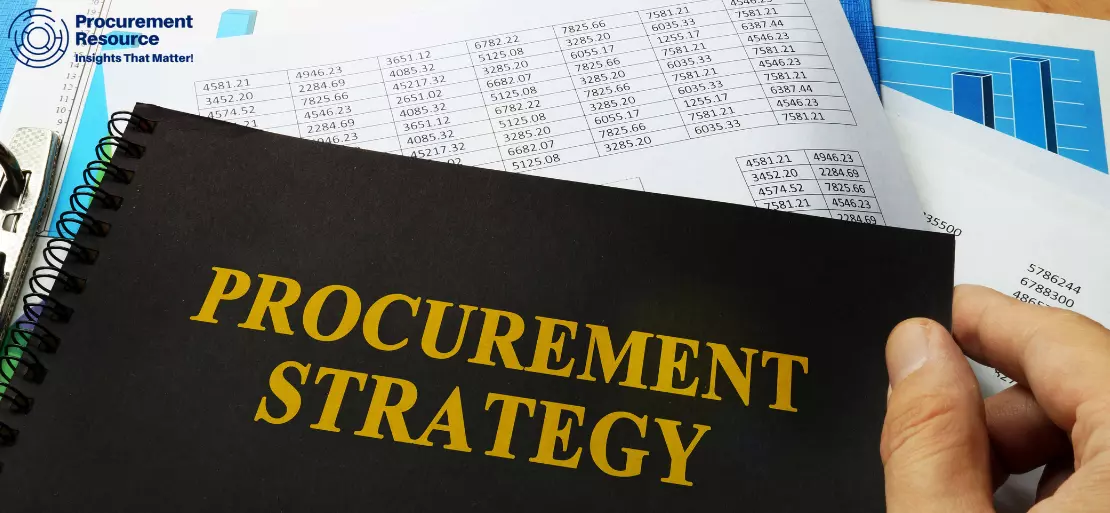Five Most Important Steps of an Effective Procurement Strategy

Procurement is one of the most pivotal elements for any business because it structures the principal framework of purchasing, demand, and supply. Strategic procurement not only helps palliate the hassles of getting strayed the mid-way, but it also helps plant the seed for the long-term success of an organization considering the right accession of the right resources at the right time.
Procurement strategy essentially sprouts from the analysis of the internal dynamics of an organization, procedural impediments, resource arsenal, purchasing ambit, external factors, implementation, and administration of the process, and finally ends up with the scope of refinement. The plan that lays the foundation for the broad spectrum of procurement of an organization cannot afford to rescind or skip any step, which may cause disruptions in strategies, thus obstructing the organization's growth.
Formulating strategies for something as intensive and broad as procurement might seem daunting. However, with the right approach and experience, the aptitude keeps getting better. Also, consulting the procurement specialists in this regard can be helpful as a team of experts can align the actions in the right channel with the most effective roadmap.
1) Evaluating and Correlating Internal Dynamics of the Organization with Business Needs
Any strategy chiefly begins with a self-assessment; procurement is no different. An organization can't devise a procurement plan unless it knows the requirement of the business and the resources to substantiate it. Hence, while penning down the strategies, it's sensible to understand the position matrix of the company, the category of purchase that is being eyed, available resources and technologies to scale the objective, etc.
2) Purchase Capability of the Organization
Once the need and demand analysis are done, the next important aspect that comes to the fore is the potential capital that can be invested. Without substantiating the demand with the purchasing capacity, an organization can't harness the full potential of the evaluation done. Also, it helps cut down the budget allocated to a commodity concerning the ambit of acquisition by choosing the most providential and economical alternative.
For instance, if an ABC commodity has an ongoing market value of USD 2 million and the purchasing capacity of an organization obstructs it from making the purchase, a more economical option can then be chosen. The step of striking in and out can only happen once the organization knows what it needs and the cost to procure (purchase) that.
3) External Elements Play a Significant Part in Procurement Strategy
As much as the internal factors, external influences play a crucial part in strategizing procurement. Market flare-ups, economic plump or plunges, effects of wars, the downturn of ongoing trends and soaring passive demand, etc., shape the procurement process a great deal. For a basic understanding, PORTER'S FIVE FORCE ANALYSIS talks about the external factors considering the industrial rivalry. Other underpinning dynamics, such as political influences, taboos associated with a commodity, and legislative countenance related to an asset, need to be considered too.
4) Technology Backup and Smooth Implementation
Once all the aspects of analysis- Internal, External, Economical are noted, and the objective is apparent, the next and the most important thing is to act upon. Technological aid and software implementation are indispensable to modern-day procurement strategies. With the availability of bazillions of data, a stockpile of information, and gargantuan implementation, technological assistance becomes too essential to elect out.
Not only does it help in a smooth action, but it also extenuates the scope of glitches and discrepancies. In this case, immense care should be given to the choice of the vendor (for third-party software), the feasibility of the software and most importantly, its success rate (obviously, if the software is not being experimented with to strategize the procurement).
5) Revisit, Refine, and Recoup in the Case of a Decline in Productivity
While rolling out the procurement strategy, productivity might plunge if implementing any of the steps missed a nail. Hence, it is highly pivotal for any organization to be prepared for unforeseen outcomes. Any deviation from the expected result must be troubleshot to expunge the causative agent at any step of the strategy. Therefore, keeping a tab on the development of the strategies is of immense importance.
About Author:
|
Prakhar Panchbhaiya Senior Content Writer at Procurement Resource Prakhar Panchbhaiya is an accomplished content writer and market research analyst. With over 4 years of experience in content creation and market analysis encompassing many industries, including pharmaceuticals, nutraceuticals, biochemistry, healthcare, ed-tech, and Food & Agriculture, he has been creating quality content for multiple sectors. He is a Biochemistry major with sturdy backing in a PG diploma in digital marketing, helping in the exhaustive content creation based on extensive research and competitive marketing. |

COMMENTS (0)